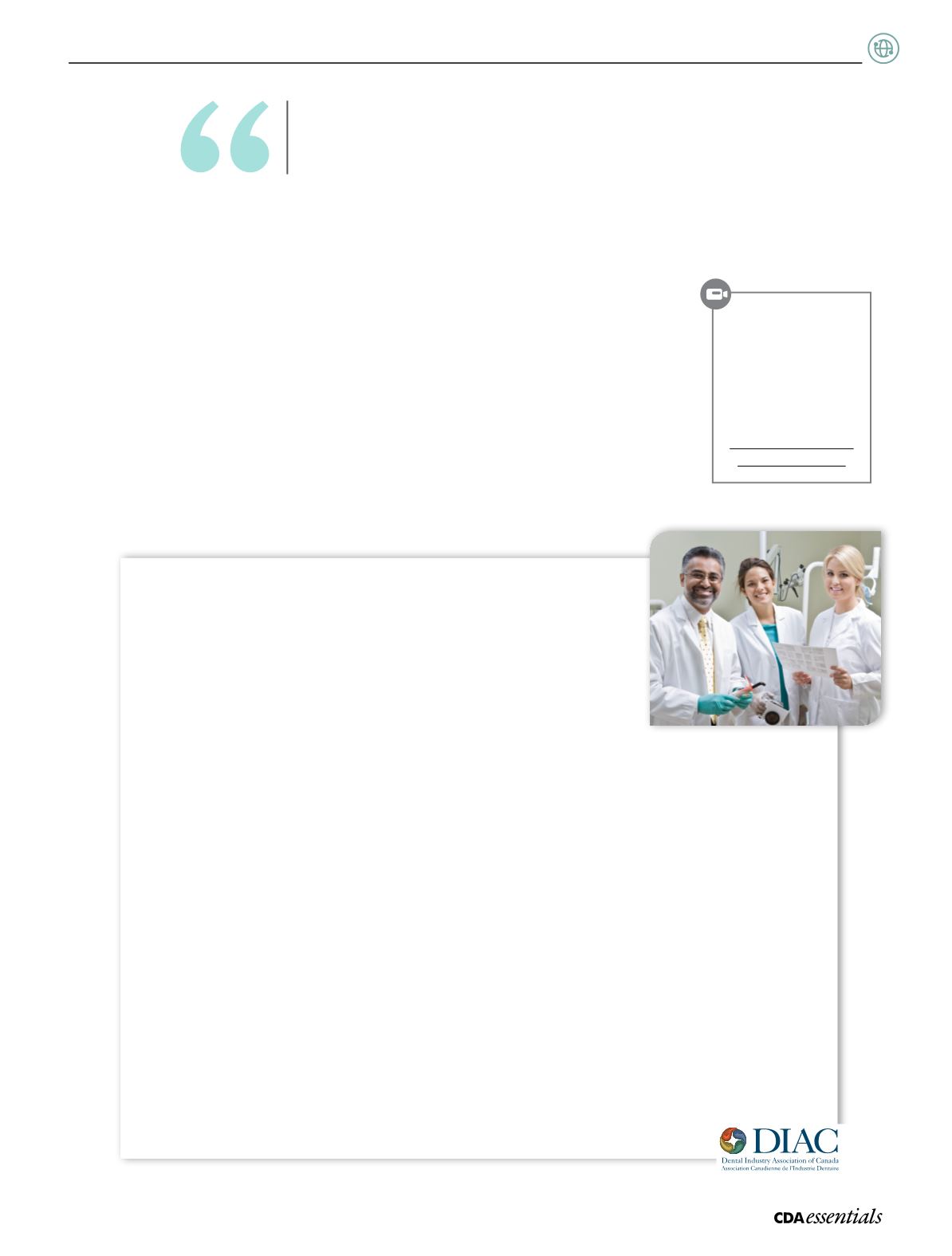

21
Volume 3 Issue 6
|
N
ews and
E
vents
Counterfeit products, which can be
indistinguishable from a compliant product,
are perhaps more dangerous than grey market
goods because nothing is known about the
manufacturing process. Mr. Teitelbaum believes
counterfeiting of dental products is on the rise
because manufacturers are making it more difficult
to reroute products. “Counterfeiting is going to be
the issue that smacks dentistry across the head,”
he claims. “Even manufacturers can’t identify a
counterfeit product—the only way to really know is
to test it.”
To ensure you purchase only compliant products,
Mr. Teitelbaum recommends that dentists always
buy from authorized sources and follow DIAC’s
suggested protocol for determining if a dental
product is legally for sale in Canada (see below).
A key point is that every dental practice should
assign one individual to check
dental products when they arrive
in the office. He estimates it should
take a dental team member about
five minutes to go through the
DIAC protocol, once they’re aware
of what to look for. “You’re making
absolutely sure that what the dentist
is putting in a patient’s mouth is
licenced for sale in Canada—and
what can be more important than
that?”
a
Visit Oasis Discussions to
watch Mr. Teitelbaum’s
full interview and
download DIAC’s
suggested protocol
for identifying
noncompliant products.
oasisdiscussions.ca /2016/06/07/ncp/Nobody really knows how these products were shipped, stored or handled,
so the consistency of a product’s quality and its overall condition is
anyone’s guess. –
Bernie Teitelbaum
DIAC’s Suggested Protocol
for Checking Product
1. Assign one knowledgeable person to check all product purchases
when they arrive in the office.
2. Keep all ordering materials (catalogues, flyers, etc.) used in ordering
the product(s) until the product has been checked in, and keep the
package until the product has been entirely consumed.
3. Manufacturers will be happy to send you a picture of their licensed products and their packaging.
4. Check each product when it arrives in the office:
Is it the same product you ordered?
Does it have the same name as advertised?
Does it have the same product number?
Is it the same package that was advertised?
Are the contents the same as advertised? (quantity, sizes, shapes, colours, etc.)
Is the package in English and French?
Have any markings been removed/scratched out?
Is the product in its original package (or a zip lock bag or other substitute container)?
Do the lot number and expiry date on the package match those on the contents?
Does the package or contents have markings that indicate it may have been rerouted
(e.g., “India only” or “Not for sale in North America”)
Is equipment CSA approved (or equivalent)?
















